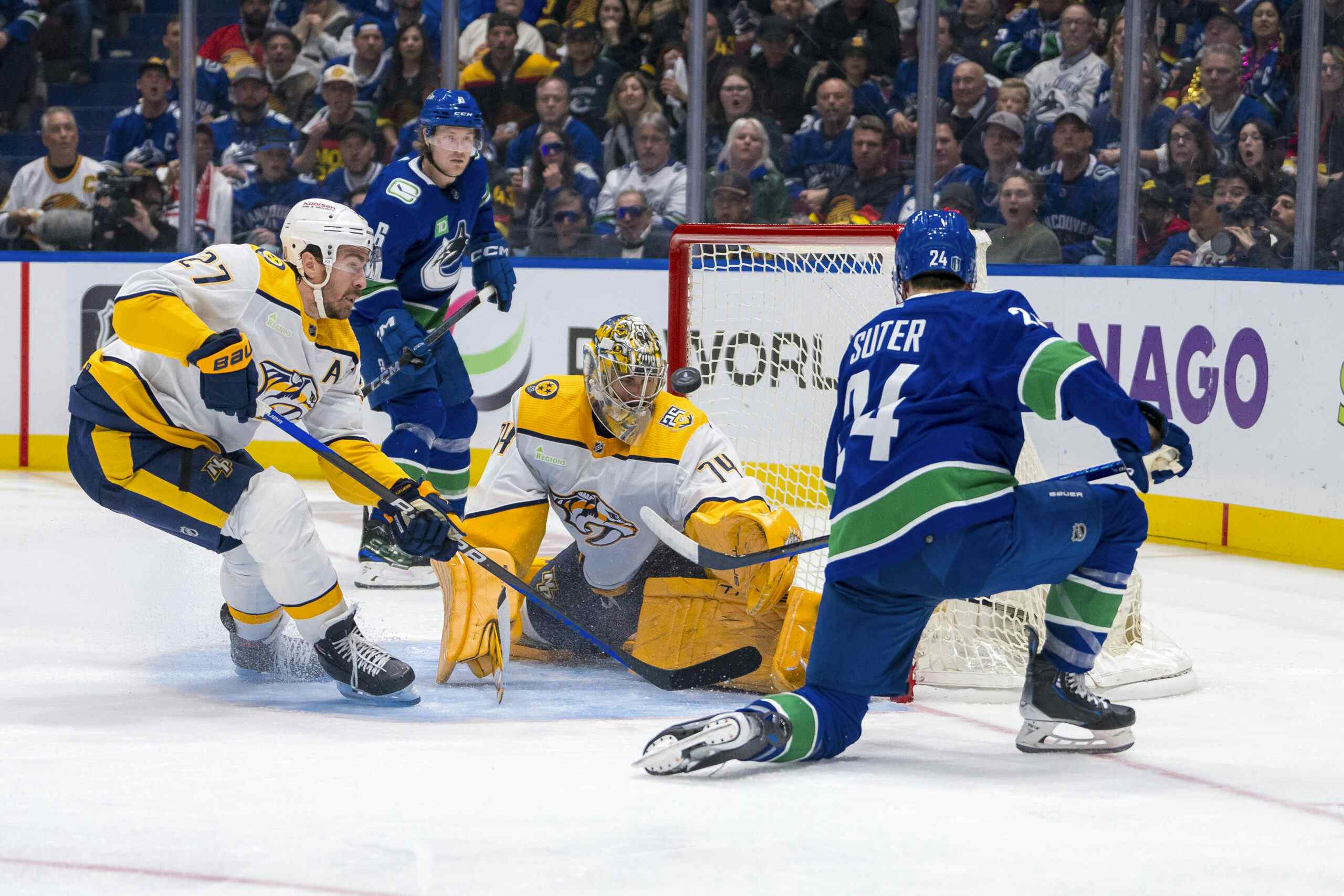Canucks Army Year in Review: Bo Horvat
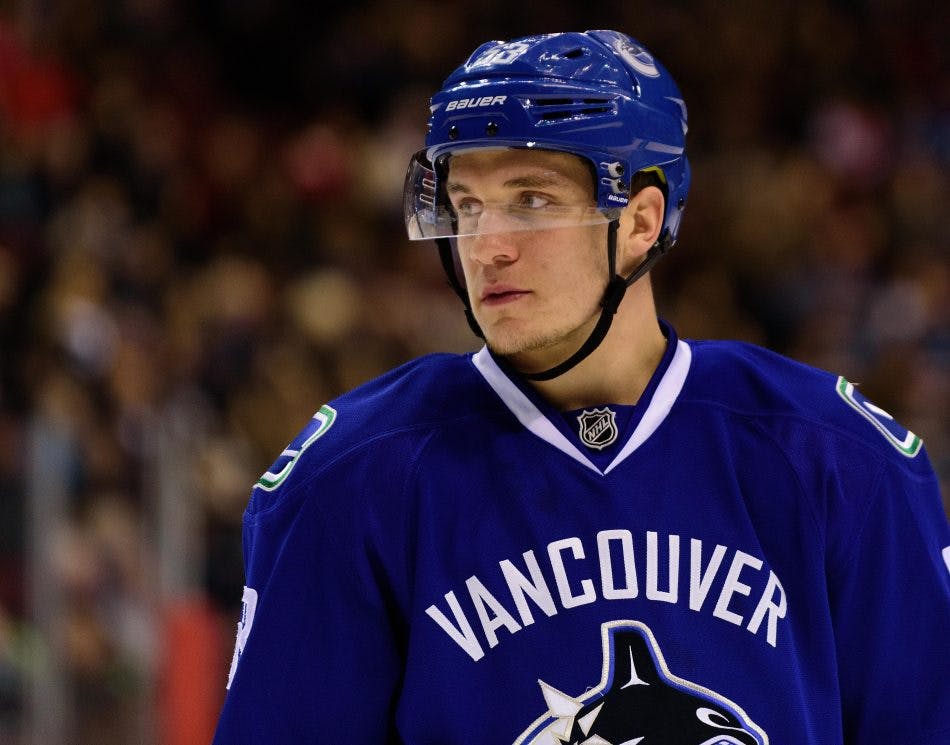
By Harman Dayal
5 years agoIn a season where Brock Boeser’s emergence stole the limelight, it was Bo Horvat who quietly continued making strides as the team’s number one centre.
Coming into training camp, the big question surrounding Horvat was if incoming head coach Travis Green would give him the reins as the team’s primary offensive weapon. The 23-year-old may have eclipsed the Sedins’ point production in 2016/17, but the Twins were still the leaders of the pack when looking at ice-time and quality of competition.
All that changed once Green took over.
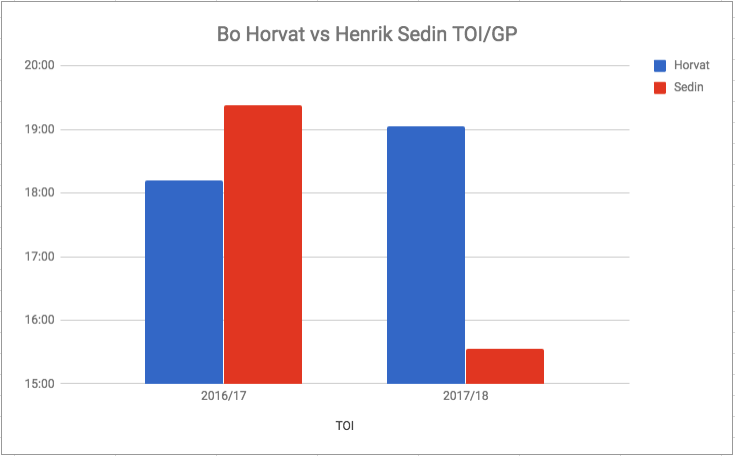
The increase in ice-time went hand in hand with tougher opposition matchups.

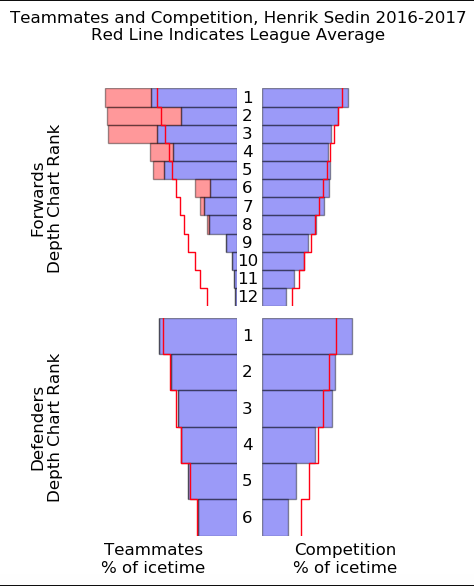
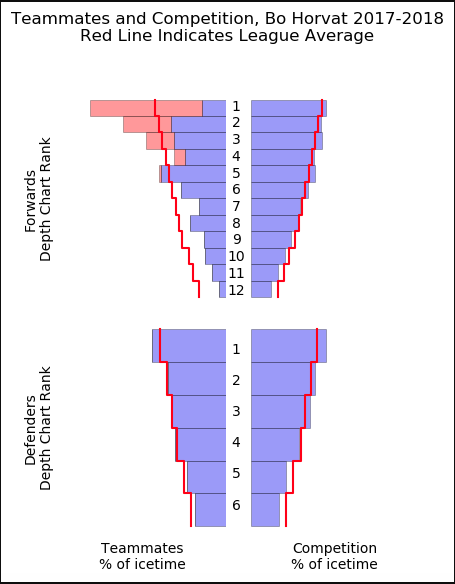
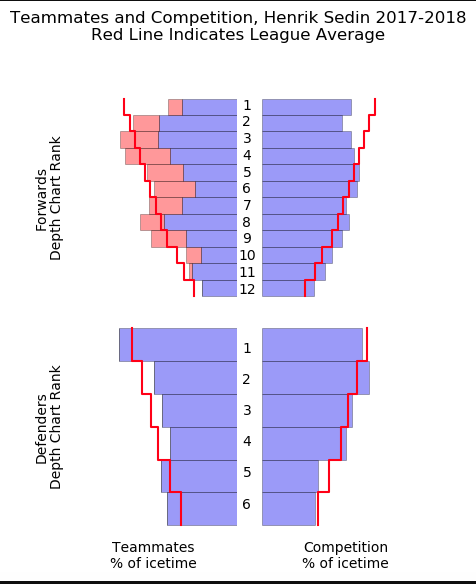
Horvat’s deployment last season appeared more the part of a middle-six centre than a first-line pivot. The visuals perhaps undersell the concern over quality of competition given that last year’s data is skewed by the final 15-20 games of the season.
That closing stretch was accompanied by changes to the way that teams matched up against the Canucks. Opposing teams recognized the threat of the Horvat line and started deploying their top pair and checking lines with more regularity against them. Speculation that forewarned a performance dip with tougher competition rang true, with the former 9th overall pick unable to find the back of the net once in the final 17 games of the season.
This season, Horvat was able to overcome those contextual challenges and continue his linear point progression.

Fans have been ambivalent about proponents of Horvat’s standing as a legitimate first-line centre and at first glance their concerns hold water.
Bo finished outside the top-31 full-time centres league-wide when looking at points per game, although it’s fair to note he was one spot away at 32nd.
Refine that criteria to look at primary points and Horvat’s position among the top-31 centres becomes clearer.
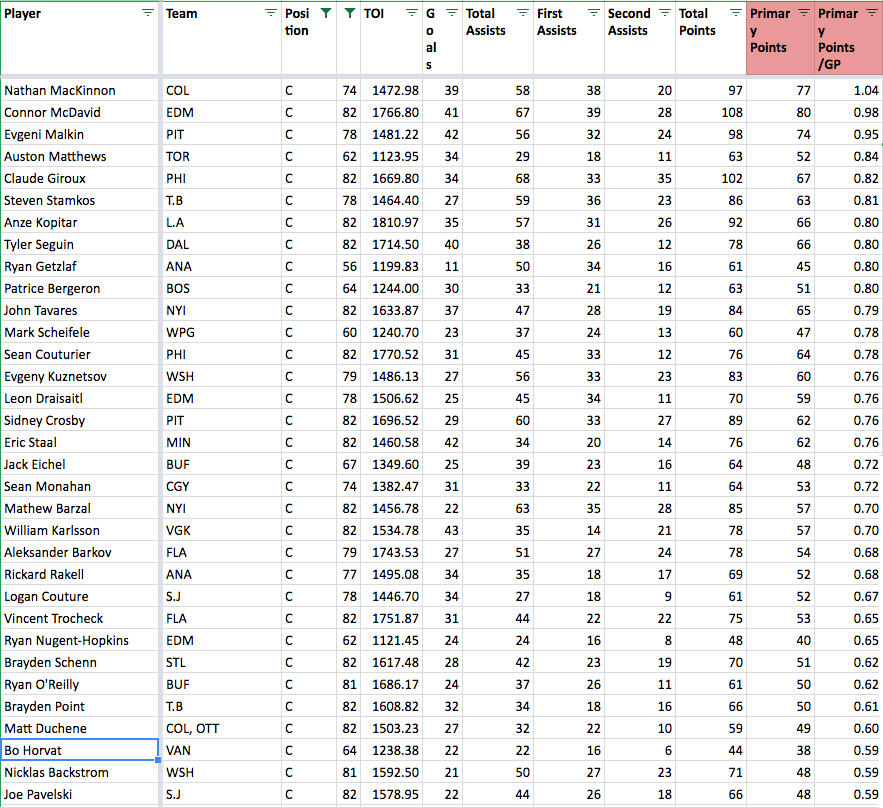
Chart courtesy Jeremy Davis
Take it a step further to look at primary points per hour and Horvat slides into the top 20 with 1.62.
A big reason for this stellar primary point production has been Horvat’s marked improvement in the way he’s utilized his teammates. Brock Boeser’s addition has been an obvious boon for the top-line, but Horvat’s shown development in his playmaking ability regardless.
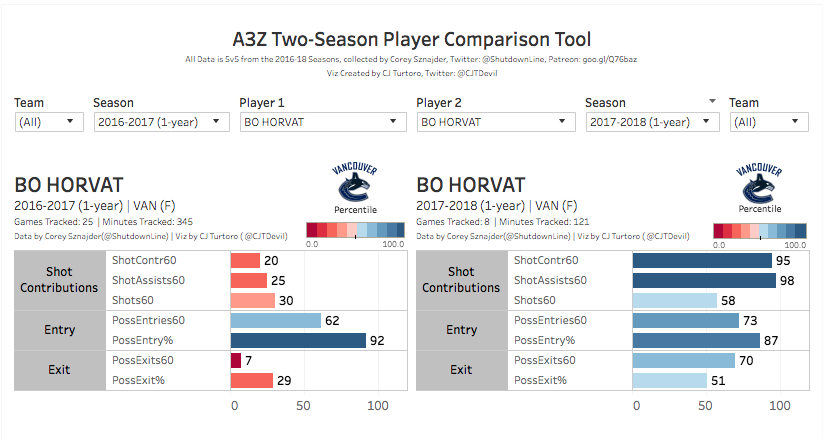
The pertinent category in this instance is shot assists per hour and while the sample size for this year’s data is small, it’s supported to an extent with the eye test. Horvat’s definitely put an emphasis on better leveraging his teammates, though I wouldn’t go as far as to say that Horvat’s an elite puck distributor like the sample might suggest.
Perhaps most telling of Horvat’s impact is his team-leading goals above replacement mark. That 13.3 goals added per 82 games average is good enough to slot into the top 20 among all NHL centres.
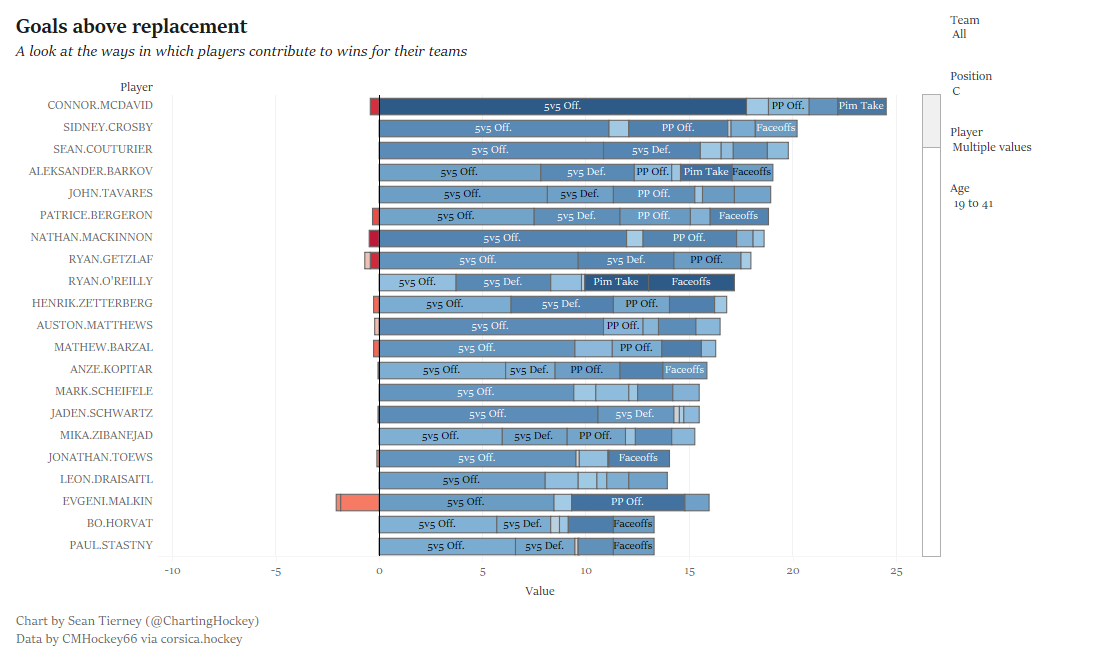
The GAR metric is a composite figure that tries to take into account performance in all facets of the game. Horvat’s spot on this list speaks volumes towards his overall impact on the team.
An underrated factor that the GAR calculation brought to light was Horvat’s excellent penalty differential. He was able to draw 11 penalties throughout the season while taking just two himself.
For those skeptical about GAR’s legitimacy, look no further than the club’s record with and without Horvat in the lineup as a measuring stick with regards to his importance to the team.

The team’s prodigious performance discrepancy makes sense from a logical standpoint when considering the structure that’s lost without Horvat in the lineup. The team relies on him to centre the first-line, play on the first power-play unit and kill penalties. When a player of that calibre goes down, it has a trickle-down effect on the rest of his teammates.
At even-strength, the Sedins were vaulted back onto the top-line and while they rose to the occasion, scoring close to a point per game in Horvat’s absence, the team won’t have that luxury next season. The substantive difference was felt with the second-line centre position– one that was taken on by a part-time centre in Sam Gagner. Soon thereafter Brandon Sutter went down with an injury as well and suddenly Nic Dowd was playing up to 17 minutes a night.
Horvat not only shelters his teammates from unfavourable deployment but also has the most positive effect on their ability to control possession among Canucks’ forwards not named Sedin.
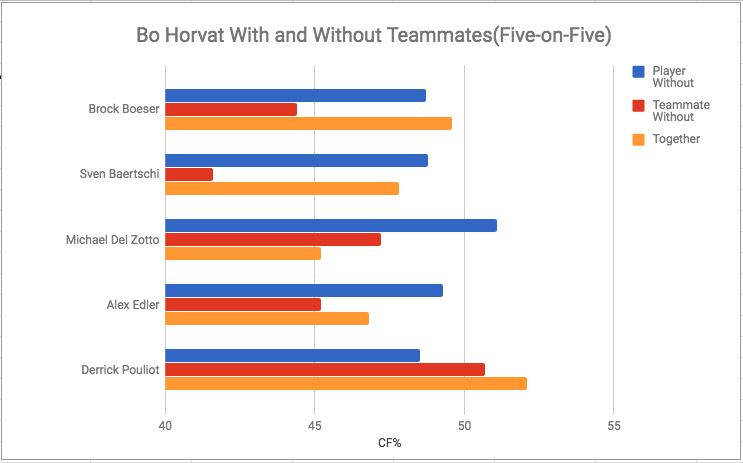
For all of Horvat’s offensive contributions, there remain glaring deficiencies in his defensive game. The team continues to operate at a net deficit with regards to controlling shot attempts while also surrendering nearly half a goal per hour extra with Horvat on the ice.
The 23-year-old creates a solvent differential on the scoresheet simply by outscoring his defensive issues. Horvat’s on-ice goals for rate of 3.21 per hour ranks him 49rd among NHL forwards and 20th among centres(minimum 400 minutes TOI) serves as a case in point.
Where Horvat did take a step forward defensively was with his play shorthanded. As I outlined in an analysis piece at the start of this season, the Canucks hemorrhaged unblocked shot attempts, goals, and high danger scoring chances at a disproportionately high rate with Horvat deployed in 2016/17. Simply put, he was one of the worst penalty killers in the league that year.
Horvat has improved significantly on those paltry results, moving the needle firmly towards respectability.


By all accounts, Horvat has elevated his game to a new level we’ve never seen before. It’s fair to speculate about the sustainability of his success, with a deeper look into the matter revealing that luck has been a factor.
The most obvious sign of possible regression is the 10.2% five-on-five shooting clip with Horvat on the ice. That shooting percentage definitely comes into play when looking at his high on-ice goals for rate.
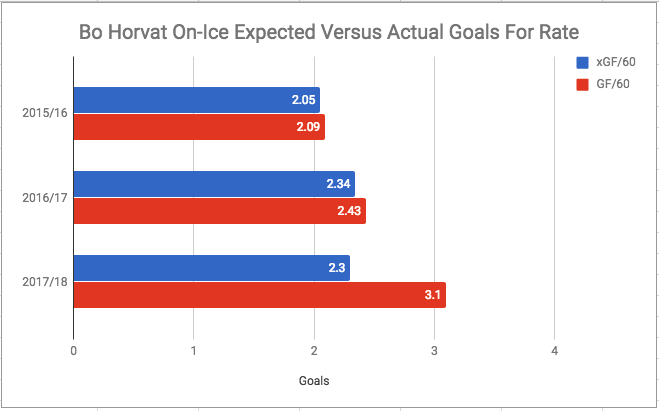
Horvat’s on-ice goals rate has traditionally remained pretty consistent relative to his expected mark. That trend was transcended this season where the Canucks produced four-fifths of a goal extra compared to the expected total with Horvat on the ice.
It’s fair to wonder how much linemate Brock Boeser may have skewed those results. The biggest flaw with Corsica’s expected goals model is that it cannot account for a player’s shooting ability– undoubtedly Boeser’s greatest asset.
Even if the on-ice shooting percentage does decline, it likely becomes balanced out if Horvat spends a full season with a healthy Brock Boeser.
Conclusion
Underrated in the hype for Brock Boeser has been the progress that Bo Horvat made in his first season as the team’s number one centre. Horvat’s scoring pace increased for a fourth consecutive season, turning out to 56 points if prorated over a full season. This came in spite of the tougher matchups he ended up facing.
Horvat’s even-strength defensive profile leaves something to be desired, though strides in his own zone were made shorthanded. All in all, it was a solid season of development– one that delivered results you might expect out of a fringe first-line centre.
Recent articles from Harman Dayal

